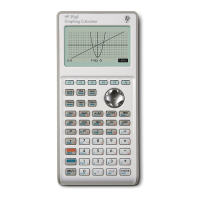Using mathematical functions 173
RANDOM Random number. With no argument, this function returns
a random number between zero and one. With one
integer argument a, it returns a random integer between
0 and a. With three integer arguments, n, a, and b,
returns n random integers between a and b.
RANDOM
RANDOM(a)
RANDOM(n, a, b)
UTPC Upper-Tail Chi-Squared Probability given degrees of
freedom, evaluated at value. Returns the probability that
a χ
2
random variable is greater than value.
UTPC(degrees, value)
UTPF Upper-Tail Snedecor’s F Probability given numerator
degrees of freedom and denominator degrees of freedom
(of the F distribution), evaluated at value. Returns the
probability that a Snedecor's F random variable is
greater than value.
UTPF(numerator, denominator, value)
UTPN Upper-Tail Normal Probability given mean and variance,
evaluated at value. Returns the probability that a normal
random variable is greater than value for a normal
distribution. Note: the variance is the square of the
standard deviation.
UTPN(mean, variance, value)
UTPT Upper-Tail Student’s t-Probability given degrees of
freedom, evaluated at value. Returns the probability that
the Student's t- random variable is greater than value.
UTPT(degrees, value)
Real-number functions
Some real-number functions can also take complex
arguments.
CEILING Smallest integer greater than or equal to value.
CEILING(value)
Examples:
CEILING(3.2) returns 4
CEILING(-3.2) returns -3

